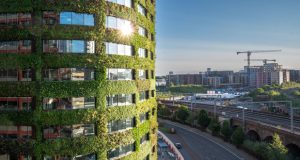As corporations worldwide continue to adjust their hybrid policies to favour in-office attendance, the office sector has regained a central role in commercial real estate. While companies are optimistic about growth – planning increases to headcount and seeking more or improved office space – economic and geopolitical uncertainties persist.
To help guide corporates through this next phase, JLL has released its Global Office Fit-Out Costs Guide 2025, providing insights into the average costs for office fit outs. By analysing data from 68 cities in 40 countries around the globe, the Global Office Fit-Out Costs Guide uncovers key findings across global cost variations, cost drivers, sustainable fit out demand and market sentiment.
Office fit out costs on the rise
Across all regions surveyed, office fit out costs have increased in the last 12 months to varying degrees. With 59 per cent of organisations globally planning to increase investment in space design, multinational corporations must understand regional disparities in office fit out costs to inform strategic planning. As with previous years, JLL found fit out costs are highest in US, Canada, UK, Switzerland, Saudi Arabia and UAE, Singapore and Japan.
Regionally, a significant premium for office fit outs is commanded by North America, where the average fit out costs is $3,070/sqm, compared to the global average of $1,830/sqm. In Latin America the average fit out cost is $1,790, followed by Europe, the Middle East and Africa, which present a wide range of office fit-out costs, with an average of $1,970. Asia Pacific offers the lowest regional average fit out cost at $1,460.
Global variations between major cities also persist. U.S. cities dominate the top 20 cities by office fit-out cost globally, alongside other major cities such as Vancouver, Tokyo, London and Dubai. Alternatively, global cities with high growth across India, South Africa, Vietnam and China offer among the lowest fit-out costs globally, though they are actively experiencing high construction growth and an evolving cost landscape.
Of the markets assessed, fit-out cost increases over the last 12 months were driven by inflation, material costs and currency volatility. Three-quarters of markets reported increases in raw material prices, and half have experienced labor shortages in the last 12 months that have increased construction costs.
Organisations need to factor in these potential cost factors throughout global construction when developing their fit-out budgets. To help with this process, JLL identified a nine-point pricing matrix, adapting standardised layouts to various quality levels (baseline, medium, high) and office configurations (Progressive hybrid, Moderate hybrid and Traditional focus), reflecting a variety of cost factors and potential associated outcomes that can inform the design and delivery of office fit outs. Builder works or construction, for example, accounts for the largest component of fit out costs globally (37 per cent) and in all regions except Latin America. These costs can be most susceptible to raw material prices and supply chain risks. Mechanical & Electrical expenses account for the second largest cost, varying from 20-45 per cent of costs.
Sustainability drives continued demand
Amid growing interest in healthier, energy-efficient workspaces, paired with the friction created by a lack of immediate supply, demand for sustainable fit outs is on the rise, with 60 per cent of markets surveyed reporting an increase in client inquiries for a more sustainable fit out in the last 12 months.
This echoes recent JLL Future of Work research, which found two-thirds of organisations globally plan to increase investment in sustainability performance in the next five years. A large part of sustainable fit out costs are dedicated to mechanical and electrical services (M&E services), which, across all countries, were found to account for an average of 29 per cent of total fit out expenses, with some regions reporting 40-50 per cent of costs. However, these upfront costs are often where the greatest long-term cost efficiencies can be found, as research has also shown that investing in upgrades to M&E services can save between 10-40 per cent on operational energy costs, depending on level of investment and upgrade.
Despite the positive outlook, challenges remain for office fit-out development. Local and regional considerations for labor shortages, talent acquisition, material availability and liquidity are all potential hurdles that global companies must navigate to ensure successful project completion. Additionally, amid economic and political uncertainty, instability persists throughout projects globally, largely driven by the potential implications of trade and tariffs. Early planning for lease ends and decisive investment in existing buildings will benefit landlords and occupiers and help to plan for and manage associated costs, as hesitancy around investment has led to tighter timeframes for leasing and capital projects.
Ruth Hynes, Director of Research & Strategy, Work Dynamics EMEA said: “The global office sector faces a complex landscape of challenges and opportunities in 2025. As corporate clients grow and expand their footprints, we anticipate the office construction will remain active even amid market uncertainty, and encourage early, strategic planning to ensure the success of fit out initiatives.”





